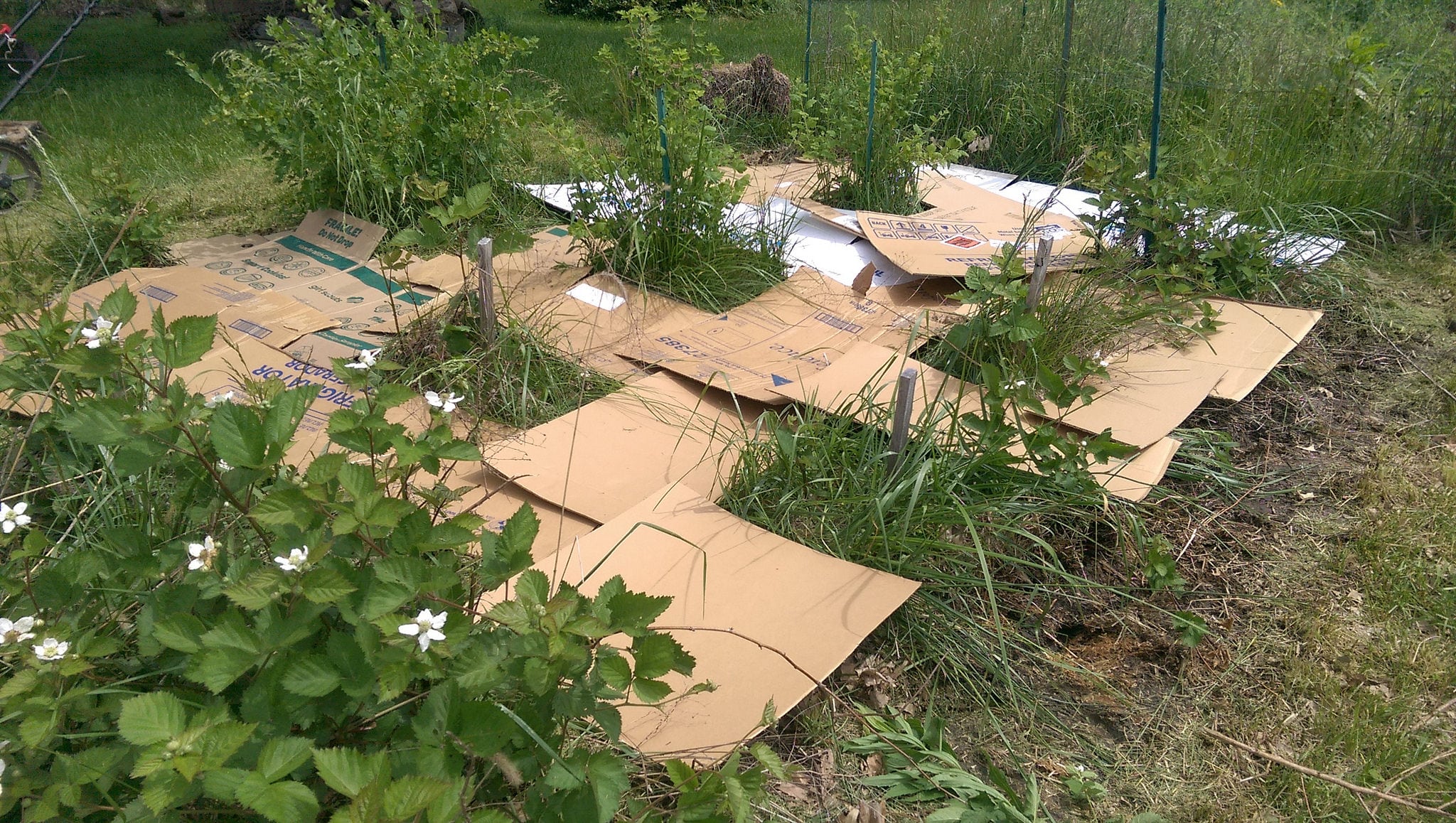Cardboard Garden Ideas – Tips On Reusing Cardboard For The Garden


If you have recently moved, there is something fun you can do with all those cardboard boxes besides fill up your recycle bin. Reusing cardboard for the garden provides compostable material, kills pesky weeds and develops a bumper crop of earthworms.
Cardboard in the garden will also kill lawn grass and help you get a new bed ready for veggies, ornamentals or whatever you want to grow. Continue reading for more cardboard garden ideas.
Reusing Cardboard for the Garden
When you think about it, cardboard is just a form of paper and comes from a natural source, trees. As a natural source, it will break down and release carbon into the soil. Garden upcycling with cardboard has many more benefits, however.
You can use it as planters, to start a garden path, mulch a prepared bed, start a new bed and much more. It is important what type of cardboard you use in your landscape.
Any cardboard that is not heavily printed, has no tape, no shiny finish, is unwaxed and plain brown is considered clean and okay to use. Some tapes will breakdown, such as the brown paper tape with strings through it.
Otherwise, keep it simple and only use the basic type of cardboard or you will be pulling tape and plastic finish out of your new areas. If you are doing a layered or lasagna garden, make sure to moisten the cardboard first before topping it with organic material or mulch. There will be more rapid breakdown when using cardboard in the garden in this manner.
Cardboard Gardening Ideas
If you can think it, it can probably be done. Garden upcycling with cardboard not only repurposes refuse but is useful in many ways.
Gardening tips, videos, info and more delivered right to your inbox!
Sign up for the Gardening Know How newsletter today and receive a free copy of our e-book "How to Grow Delicious Tomatoes".
The most common of the cardboard garden ideas is to use it to start a new bed, called sheet mulching. It doesn't matter if the area has weeds or grass but do remove large rocks and other items you wouldn't want in a planting space. Lay the cardboard down on top of the area and moisten well. Use those rocks or any other heavy items to hold the cardboard down to the ground. Keep the area moist. A good time to do this is in fall. By spring you will have killed the weeds and the grass, and the area will be ready to till.
Layered beds will become super rich and nutrient dense if you use cardboard. It is similar to the method above, only you cover the cardboard with mulch or compost. In spring, simply till the area and you will be ready to plant.
Or, perhaps, you are an antsy gardener who wants to get going immediately once temperatures are warmed. Prepare your vegetable beds in fall and then cover them with cardboard to keep weeds from filling the areas.
Other Ways to Use Cardboard in the Garden
Lay cardboard down where you want a path and cover with pavers. Over time, the cardboard will melt into the soil but it will kill any undesirables under the pavers in the meantime. Shred the cardboard and add it as an important carbon source to your compost bin.
Another idea for reusing cardboard for the garden is to place pieces of it around plants in areas that are prone to weeds. It will reduce weeds drastically and eventually compost into the soil.
For a cute gift idea, have the kids paint smaller cardboard boxes and fill them with soil and colorful flowers. It would make a special gift for grandma or even their teacher.

Bonnie Grant is a professional landscaper with a Certification in Urban Gardening. She has been gardening and writing for 15 years. A former professional chef, she has a passion for edible landscaping.
-
 Looking For Plants To Give You The Soft And Fuzzies? Try These 5 Fuzzy Leaf Plant Options
Looking For Plants To Give You The Soft And Fuzzies? Try These 5 Fuzzy Leaf Plant OptionsLovers of texture, drama, silver foliage and tactile plants will adore these special sensory garden additions. These fuzzy leaf plant options will leave you all aglow
By Susan Albert
-
 Get Ready For A Summer Of Hummers! Grow These Full Sun Hummingbird Plants and Flowers
Get Ready For A Summer Of Hummers! Grow These Full Sun Hummingbird Plants and FlowersIf you’re lucky enough to enjoy a sunny backyard, make sure you are maxing out on your pollinator opportunities and grow these full sun hummingbird plants and flowers
By Tonya Barnett